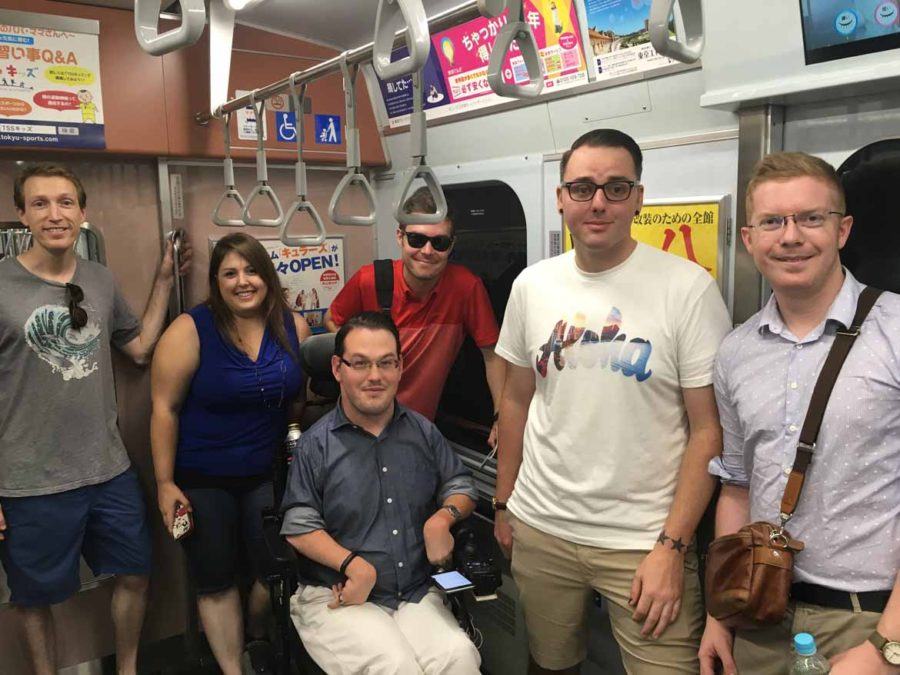Like this post? Help us by sharing it!
Charlea is one of our expert tour leaders, tirelessly taking Inside Japan customers along the length and breadth of Japan. Originally from New Mexico, she lived in Okayama and Osaka before settling in Tokyo – where she is based today. In this post, she and our other intrepid tour leaders headed out on a training day with Josh Grisdale for an introduction to accessible Japan in an electric wheelchair.
When coming to Japan everyone gets excited about the promise of amazing transportation; not many of us consider having to bring our own set of wheels and the challenges of getting around and seeing the sites with those wheels. Personally, not a day goes by that I don’t think about a special person in my life. Growing up, I was very close to my Uncle Steven Burkham, who, due to complications from type 1 diabetes, had specific accessibility needs. Because he had a love for life and such an adventurous spirit, I am always thinking about how much he would have loved being with me during my travels throughout Japan.
In order to better share Japan with others like my uncle, I and a group of other Inside Japan tour leaders met up with Josh Grisdale, a Tokyo resident of nine years with specific accessibility needs. We could not have had a better guide to open our eyes to the “barrier-free” side of Tokyo.
Our day in Tokyo took us to various locations: Harajuku, Shibuya, Asakusa Temple (including backstreets), and Ueno. We started off at Harajuku’s own Meiji Jingu Shrine. This shrine’s main approach is a loose gravel path; Josh proved that in his set of wheels it was no problem to tackle. The shrine also offers accessible restrooms. Josh, on a scale of one to ten, rated them an eight and noted that Japan offers some of the best accessible restroom facilities in the world. Due to the large amount of space in the restrooms, a wheelchair can fully turn around with room to spare. The only trick is to not lock the next user out by locking the door from the inside!

At Harajuku we also took the opportunity to check out Takeshita Street, as all the super-trendy shops and crepes were calling our names. Although each shop varies in its level of accessibility, Josh did mention that there have been plenty of times when he had “borrowed” slopes from a neighboring shop to get in and that overall, most shops were quite friendly and helpful.
We then jumped down to the subway’s Fukutoshin line to head over to Shibuya. For travellers with wheelchairs, it is important to stop and speak with station staff before heading down to the platform. They will verify travel plans and proceed to give red-carpet treatment by escorting travellers to their train, even folding out a special, not-so-red, ramp to board the train. When exiting, the VIP treatment doesn’t end. Station personnel will be waiting to escort you to the nearest exit or transfer platform.
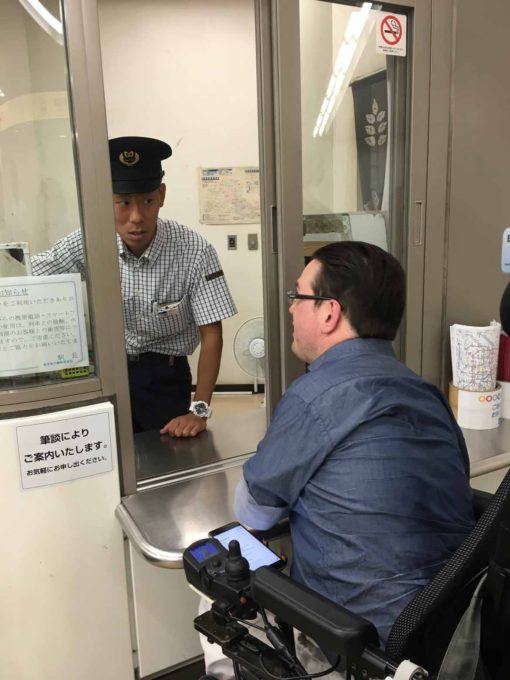
After taking our time crossing Shibuya’s famous intersection (“the scramble”) in good fashion, we set off on our greatest adventure of the day: finding access to the subway’s Ginza line. After testing out what seemed like every elevator in the station and finding access to the platform heading in the opposite direction, we finally made it to ours. While waiting for our final elevator to the platform headed to Asakusa, Josh explained that he always plans an extra 15 minutes per transfer. This means that planning for a longer-than-normal travel time is important; preparation is key.
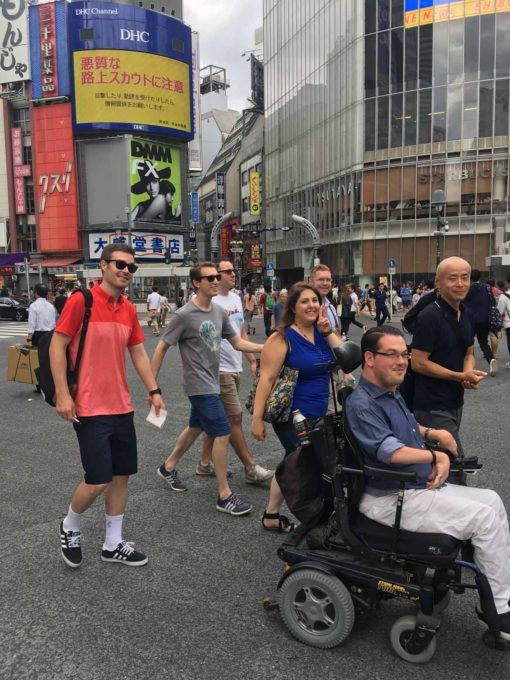
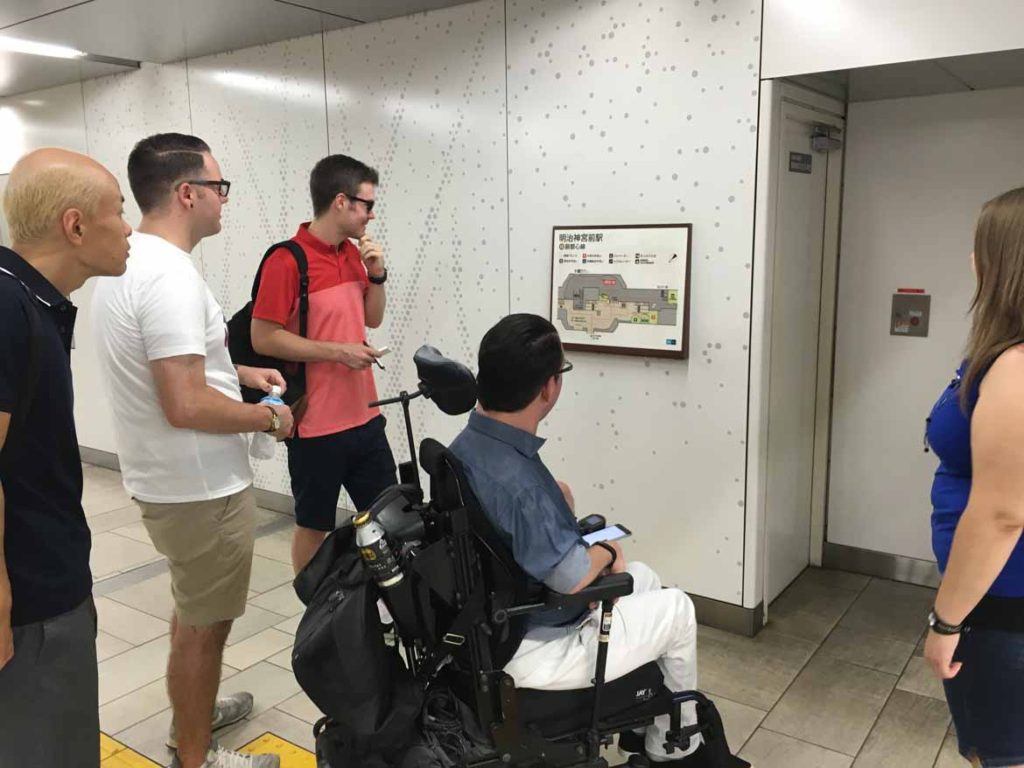
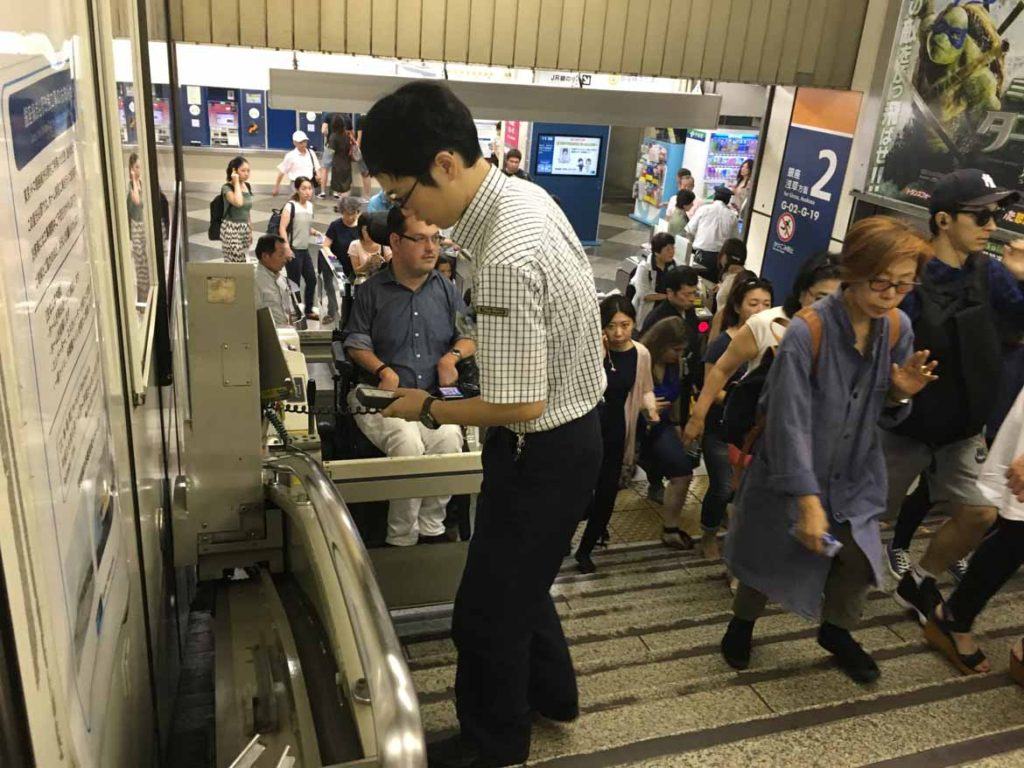
Asakusa’s Senso-ji Temple is a great place for accessible site-seeing; it includes not just a ramp but an elevator up to the temple, making it a great place to view dragon paintings on the temple’s ceilings. Aside from the temple, the backstreets offer wide pedestrian roads and traditional shops for souvenir shopping. Great outdoor izakaya (Japanese pubs) are also very accessible for an afternoon lunch or dinner with the locals.
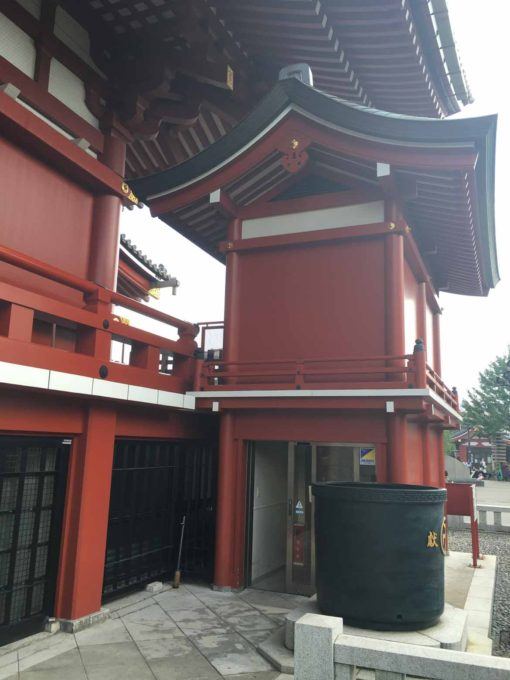
After a cruise through Ueno Park to see the lily ponds, our very full day came to an end, and sadly it was time to say goodbye. A special thanks to Josh for his support in answering all of our questions and for taking time to better enrich our understanding of accessible Tokyo!
When considering a trip to Japan with specific accessibility needs, there’s only one question you need to ask yourself: Are you ready for an adventure? There is no better time than now to take advantage of growing “barrier-free” access in Japan, and thanks to Josh our team of travel consultants and tour leaders are ready and waiting to make your plans and show you around. Get started with our Wheelchair Accessible Golden Route itinerary, or have us design your perfect trip from scratch. Get in touch to find out more.
Josh Grisdale has collaborated with Inside Japan before – click here to read his blog piece about travelling to Japan with a disability. This blog post can also be found on Josh’s website, accessible-japan.com.


